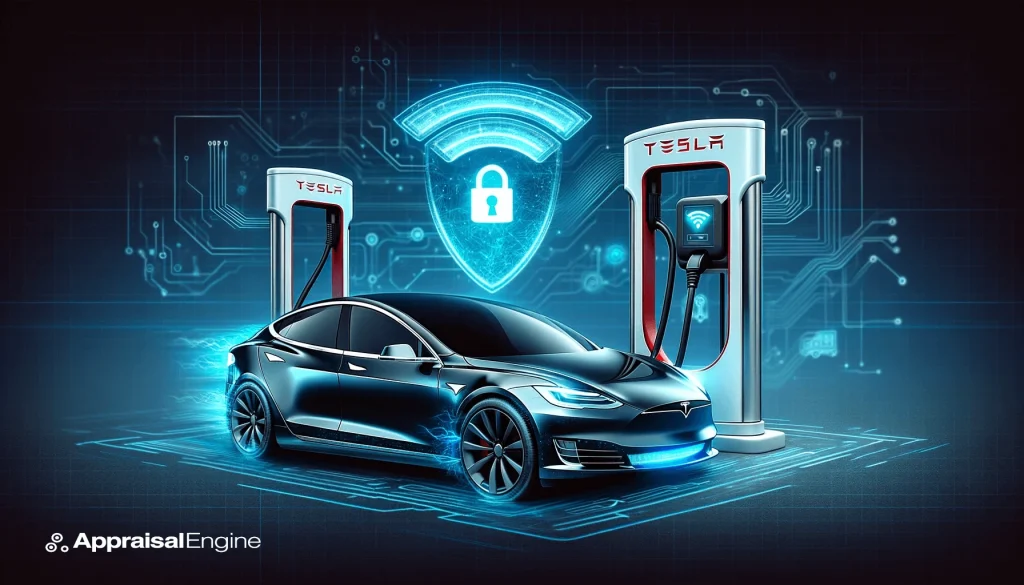In an era where technology seamlessly integrates into every aspect of our lives, the convenience it offers sometimes comes with unexpected vulnerabilities. Imagine pulling up to a Tesla charging station, plugging in your car, and deciding to log into the WiFi network while you wait. It seems harmless, right? Wrong. Recent findings by security researchers Tommy Mysk and Talal Haj Bakry have shed light on a cleverly disguised threat that could leave Tesla owners without their vehicles. This article dives deep into their groundbreaking research, exploring the intricacies of this modern-day heist and why it’s a wake-up call for digital security in the automotive industry. So, buckle up as we navigate through this electrifying journey of innovation, oversight, and the quest for a more secure future.

How to Secure Your Tesla Against WiFi Hacking Attempts (PDF)
The Digital Key to Your Tesla: A Hacker’s Dream
How It Works
The strategy employed by hackers to gain access to Tesla vehicles is alarmingly straightforward yet ingenious. At the heart of over 50,000 Tesla charging stations worldwide is a WiFi network, typically named “Tesla Guest,” designed for the convenience of Tesla owners. By creating a counterfeit “Tesla Guest” WiFi network using a device as simple as the Flipper Zero, costing merely $169, hackers can lure Tesla owners into a trap. The moment an owner attempts to connect to this rogue network, they’re directed to a fraudulent Tesla login page. This page is designed to harvest their credentials, including usernames, passwords, and even two-factor authentication codes.
The Tools of the Trade
While the Flipper Zero was the device of choice for Mysk and Bakry, virtually any wireless-enabled device can serve as the hacker’s toolkit. Whether it’s a Raspberry Pi, a laptop, or even a smartphone, the method remains unaffected, highlighting the ubiquity and ease of this security breach.
Seizing Control
With the stolen login details, hackers swiftly move to access the Tesla app, leveraging the fleeting window before the 2FA code expires. Tesla’s innovative approach allows owners to use their smartphones as a digital key, eliminating the need for a physical key card. This feature, however, becomes the Achilles’ heel as hackers, armed with the owner’s credentials, clandestinely add a new phone key, granting them full access to the vehicle.
A Closer Look at the Experiment
The Setup
Tommy Mysk tested this vulnerability on his own Tesla, utilizing a freshly reset iPhone to eliminate any chances of prior association with the vehicle. Astonishingly, the method proved successful on every attempt, starkly contradicting Tesla’s claims and highlighting a significant oversight in their security protocols.
Tesla’s Response
Despite Mysk’s efforts to bring this issue to light, Tesla’s response was underwhelming. The company conducted an investigation but ultimately dismissed the concern. This reaction raises questions about the automotive giant’s commitment to addressing potential security flaws in their system.
The Road Ahead: Mitigating the Risk
The findings of Mysk and Bakry’s experiment are not just a wake-up call for Tesla but for the entire automotive industry. As cars evolve into mobile computing platforms, the implications of digital security breaches become increasingly severe. Here are some potential measures to curb such vulnerabilities:
- Mandatory Physical Key Card Authentication: Reinforcing the use of physical key cards could add an extra layer of security, making it significantly harder for unauthorized access.
- Notification Alerts for New Phone Keys: Implementing alerts for the addition of new phone keys could serve as an early warning system for owners, potentially thwarting unauthorized access.
Conclusion: Navigating the Digital Landscape
The ingenuity of hackers knows no bounds, making it imperative for companies like Tesla to remain vigilant and proactive in safeguarding their technologies. While the allure of convenience and innovation drives the automotive industry forward, this incident serves as a poignant reminder of the importance of robust digital security measures. As we journey into the future, let’s not forget the lessons learned from the charging stations — vigilance, innovation, and security must go hand in hand.
In the grand scheme of things, Tesla’s story is but a chapter in the ongoing saga of digital security. It’s a narrative that challenges us to rethink our approach to innovation, urging us to strike a balance between convenience and security. As we continue to explore the vast potential of technology, let us do so with a keen eye on safeguarding our digital domains, ensuring that our journey towards progress remains secure and steadfast.





